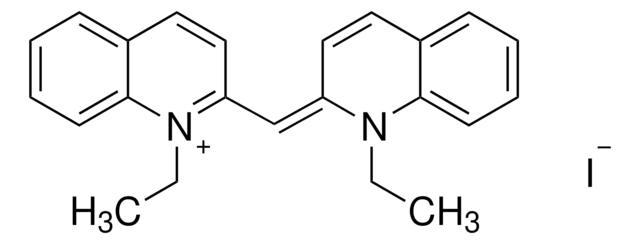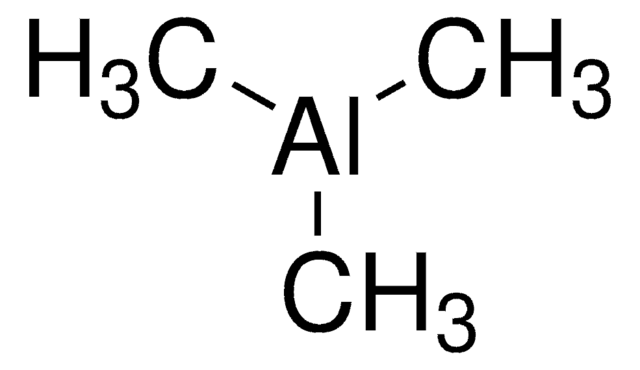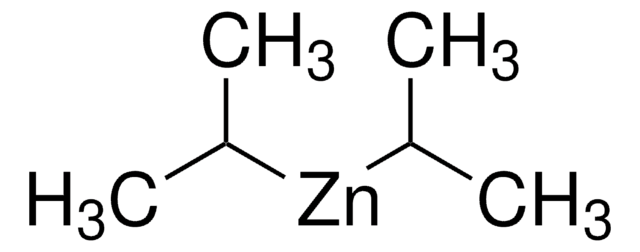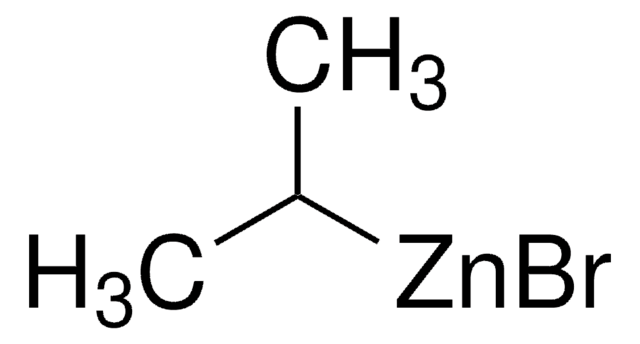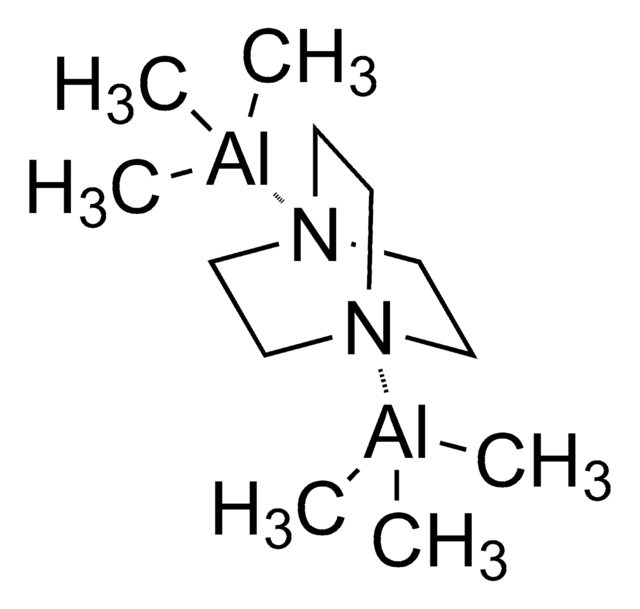Wichtige Dokumente
417246
Dimethylzink -Lösung
1.0 M in heptane
Synonym(e):
Dimethylzinc
About This Item
Empfohlene Produkte
Form
liquid
Qualitätsniveau
Konzentration
1.0 M in heptane
bp
44-46 °C
Dichte
0.724 g/mL at 25 °C
SMILES String
C[Zn]C
InChI
1S/2CH3.Zn/h2*1H3;
InChIKey
AXAZMDOAUQTMOW-UHFFFAOYSA-N
Suchen Sie nach ähnlichen Produkten? Aufrufen Leitfaden zum Produktvergleich
Verwandte Kategorien
Allgemeine Beschreibung
Dimethylzinc is a diorganozinc reagent and nucleophile used in the synthesis of propargylic amines.
Anwendung
- A catalyst with nickel for the stereoselective C−2 alkenylation and dialkenylation of pyridine derivatives by alkynes to give monoalkenylation products.
- A reagent with aldehydes and 2-methoxyaniline for the synthesis of enantioselective alkyl and aralkyl secondary amines via one-pot three-component coupling reaction in the presence of zirconium tetraisopropoxide.
- A methylating reagent for methylation of fluoroalkylated pyruvates in the presence of copper/chiral diphosphine catalyst.
Signalwort
Danger
Gefahreneinstufungen
Aquatic Acute 1 - Aquatic Chronic 1 - Asp. Tox. 1 - Eye Dam. 1 - Flam. Liq. 2 - Pyr. Liq. 1 - Skin Corr. 1B - STOT SE 3 - Water-react 2
Zielorgane
Central nervous system
Lagerklassenschlüssel
4.2 - Pyrophoric and self-heating hazardous materials
WGK
WGK 3
Flammpunkt (°F)
30.2 °F - closed cup
Flammpunkt (°C)
-1 °C - closed cup
Persönliche Schutzausrüstung
Faceshields, Gloves, Goggles
Hier finden Sie alle aktuellen Versionen:
Besitzen Sie dieses Produkt bereits?
In der Dokumentenbibliothek finden Sie die Dokumentation zu den Produkten, die Sie kürzlich erworben haben.
Kunden haben sich ebenfalls angesehen
Unser Team von Wissenschaftlern verfügt über Erfahrung in allen Forschungsbereichen einschließlich Life Science, Materialwissenschaften, chemischer Synthese, Chromatographie, Analytik und vielen mehr..
Setzen Sie sich mit dem technischen Dienst in Verbindung.

